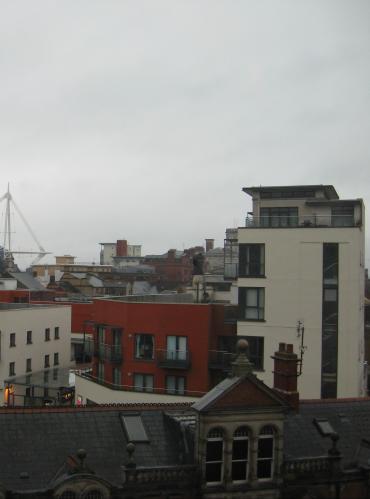|
An appeal
The substance dihydrogen monoxide is quite
common internationally with very little being known of its many
dangers. Despite the fact that inhalation of very small quantities
can cause death within seconds (far more rapidly than any snake
venom), it is taken orally by great swathes of the world's population
in large quantities on a daily basis. Long-term users stand a
severe risk of dying within 24 hours of consumption - indeed,
many recently deceased elder people, it has recently been discovered,
have taken up to four pints of dihydrogen monoxide over the previous
day and have been pursuing this habit for much of their lives.
It is thought that they believe that it remedies certain bodily
pains, yet over-consumption in the short term can result in undesirable
side-effects. It is also internationally used as a cleaning agent,
despite the worrying effects which it has when human skin is
exposed to it for any length of time - effects ranging from mild
wrinkling to long-term fungal infections for which there are
few reliable cures.
Dihydrogen monoxide is also a major threat
to our modern way of life. Small quantities can cause major road
accidents. Larger quantities can cause substantial property damage
and widespread fatalities. It is responsible for the destruction
of many buildings in recent years and its intrusions into ships
has been known to cause them to sink - or, at the very least,
decay until they are useless. It is also used as a cooling agent
in certain nuclear power stations - it is believed that Chernobyl
made use of it. This popularity is despite the fact that it is
one of few non-metal fluids to conduct electricity; large numbers
of people are electrocuted every year when they and electricity
simultaneously encounter an area of this chemical. Meanwhile
polluting industries like to mix their deadly produce with this
substance which cannot be removed except with extensive rubbing.
This is an odourless substance which is not
immediately noticed by many, despite its dangers. It takes only
very small quantities to render bread inedible, ruin sugar and
dissolve large quantities of salt. Its presence encourages the
decomposition of many foods - meat in particular.
In its solid form, dihydrogen monoxide has
been known to cause incredible damage to the landscape. Despite
this solid format only breaking down slowly and otherwise remaining
exceedingly and remarkably solid, plus its ability to cause burning
and loss of limbs if contacted for more than a few seconds, people
at parties put it in their drinks.
The gaseous form can also cause burns and
is a recognised greenhouse gas which is far more serious than
the comparatively insignificant carbon dioxide.
In certain circumstances or when mixed with
certain other chemicals such as lithium, dihydrogen monoxide
can be made to explode.
The area which particularly concerns the Order
of the Bed is that getting a quantity on a bed can render it
unusable for lengthy periods. Consequently the Order recommends
that this deadly chemical should be collected up, put into brown
paper bags and despatched to Mars as soon as possible. Our staff
are utterly bewildered as to why people have gathered in Copenhagen,
Kyoto and other such places to arrange to rectify its absence.
For more information on this terrible
substance, visit the Dihydrogen
Monoxide Research Division (external link). |



